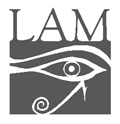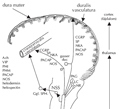The eLitMed.hu medical portal uses computer cookies for convenient operation. Detailed information can be found in the Cookie-policy.
Lege Artis Medicinae - 2004;14(03)
Content
[INSULIN RESISTANCE: FOCUS ON THE ADIPOSE TISSUE]
[Insulin resistance is defined as a state of subnormal biological response to normal quantity of insulin. This phenomenon was first described by Hinsworth and Kerr in 1939, however it has come to the centre of interest only in the last two decades. It is the central pathogenetic factor of type 2 diabetes and the more complex clinical entity of metabolic syndrome, consequently also referred to as insulin resistance syndrome. In the background of insulin resistance alterations of the adipose tissue can be observed which clinically means obesity in most of the cases, however, this issue cannot be simplified to obesity only as increase in adipose tissue growth may be beneficial in certain cases. Current article discusses the explanation of this paradox and the pathophysiologic link between adipose tissue and insulin resistance. It also reviews the therapeutic aspects of insulin resistance emphasizing the role of thiazolidinedione type drugs having recently joined the therapeutic palette.]
[THE PROBLEM OF SMOKING]
[Smoking causes a health catastrophy all over the world. Its importance is increasing in the less developed countries. More and more young people (especially women) have started smoking recently. Its devastating effect on women carries on to the next generations. Prevention should already begin in childhood. In Hungary, there is a wide network to assist for those who want to give up smoking - especially in the national network of lung health care clinics. Peer supporters have a prominent role in helping these patients. The market-strategy and publicity campaign of major tobacco producers also deserves intensive attention.]
[TRIPTAN THERAPY OF MIGRAINE]
[Migraine sufferers in Hungary present a major epidemiological challenge with about 12% of the population affected. Authors have reviewed an extensive body of internationally published literature relative to the 5-hydroxi-triptamin receptor agonists such as the triptans. While summarising most relevant data with a view to enable physicians to choose the most effective therapy for an individual, the article also discusses the prevailing questions of efficacy, tolerability and safety. For those patients with differential-diagnostic difficulties referrals should be made to the specialized 'headache centers' of neurological departments.]
[THE GENOMIC BACKGROUND OF ALLERGY]
[In this review we summarise the current results of the genomic investigation of allergic diseases. From the genetic point of view allergy is multifactorial, which means that the susceptibility to the disease is determined by the effect of one or more genes or the interactions between multiple genes and involves important nongenetic factors such as the environment for their expression. Among allergic diseases the genomic background of asthma was studied most thoroughly. Until now, using hundreds of DNA markers, located across all of the human chromosomes, 16 genome-wide screens for susceptibility genes for asthma or asthma related intermediate phenotypes in 12 different populations have been published and 20 chromosomal regions have been highlighted for further analysis. In genetic association studies more than 500 genes were identified as candidate genes for asthma. In this review, we selected those results which were consistently reported by several independent studies or appeared particularly important or interesting. According to the results of the human genome programs and association studies we discuss the possible roles of candidate genes found in these loci in the pathomechanism of allergy and atopy.]
[PRESENTATION OF ACUTE ABDOMINAL SYMPTOMS WITH UNDERLYING MALIGNANT DISORDERS]
[Patients with different type of undiagnosed malignancy occasionally referred to emergency departments with acute disease-related symptoms as first signs of their underlying process. However, this broad spectrum of clinical signs and symptoms do not occur very often but may result in very poor outcome for these patients. It is therefore essential to establish correct diagnosis in time and provide appropriate care of patients with acute abdominal complaints. Cancer patients are frequently referred to doctor because of gastro-intestinal obstruction, perforation or bleeding and with symptoms of inflammation. In 3-5% of the cases an urgent operation is necessary. As the cure rate of the cancer patients is largely dependent on the stage of the tumour, it is important to make relevant staging, to set up diagnosis at the earliest phase and start the appropriate therapy in due time in a multidisciplinary way.]
1.
Clinical Neuroscience
[Headache registry in Szeged: Experiences regarding to migraine patients]2.
Clinical Neuroscience
[The new target population of stroke awareness campaign: Kindergarten students ]3.
Clinical Neuroscience
Is there any difference in mortality rates of atrial fibrillation detected before or after ischemic stroke?4.
Clinical Neuroscience
Factors influencing the level of stigma in Parkinson’s disease in western Turkey5.
Clinical Neuroscience
[The effects of demographic and clinical factors on the severity of poststroke aphasia]1.
2.
Clinical Oncology
[Pancreatic cancer: ESMO Clinical Practice Guideline for diagnosis, treatment and follow-up]3.
Clinical Oncology
[Pharmacovigilance landscape – Lessons from the past and opportunities for future]4.
5.












